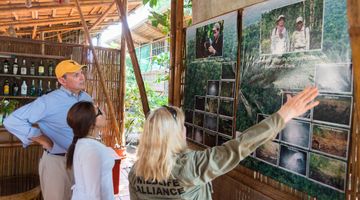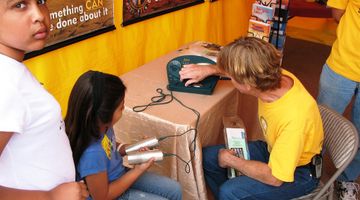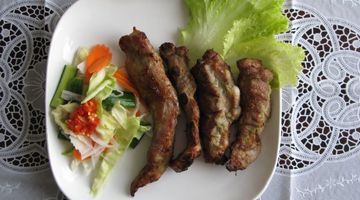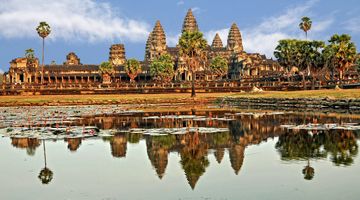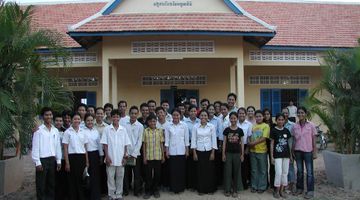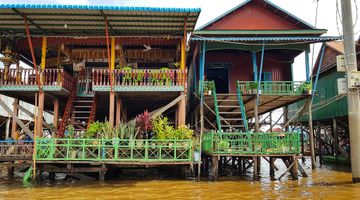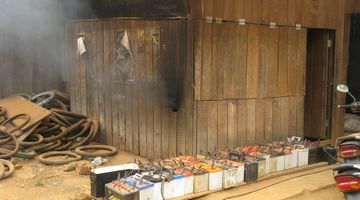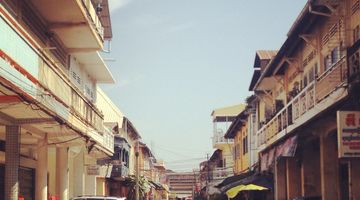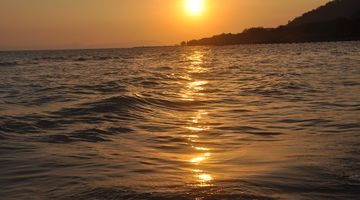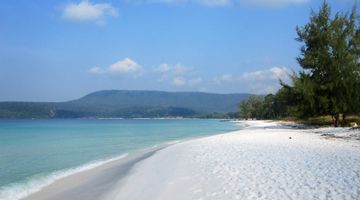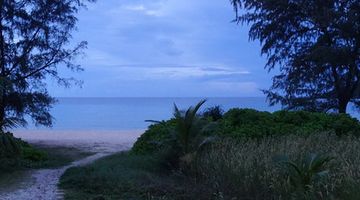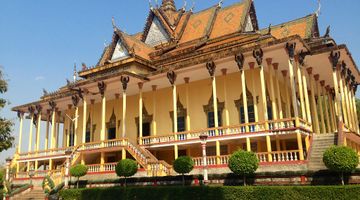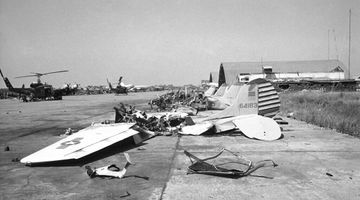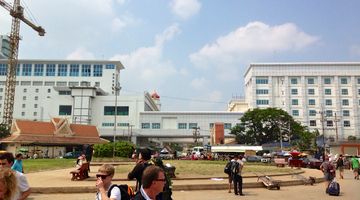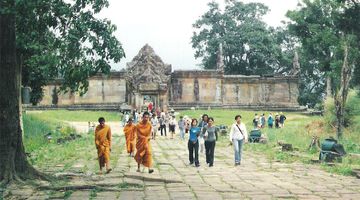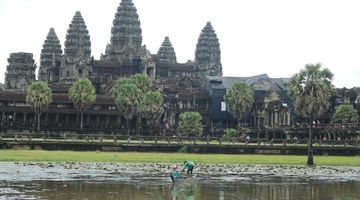Best Travel Tips for Your Journey to Cambodia
Travelling in Cambodia presents a few challenges. However, they are not so great that they cannot be overcome with a little planning, consideration and conscientiousness. If you’re feeling a little uneasy, or just want to squeeze every drop of enjoyment out of your trip through rigorous attention to detail, then you’ve come to the right place. Read along.
Budgeting – How much to budget per day?
Budgeting in Cambodia is one of the most pleasant events one can experience. With no overheads, relatively low prices of food, transport and accommodation, there is very little that will have you feeling stressed. That being said, it is a country of much variety, and as such, very different amounts of money can be spent in the same areas, experiencing the same events.
For instance, the hyper-vigilant, extremely budget conscious traveller could get away with spending less than USD30 a day. By staying in a very cheap backpackers or a no-frills room for two, riding the busses, and eating at local joints operated out of Khmer’s garages our out the front of their homes, you can really stay well clear of any real expense without much sacrifice on your end!
A mid-range budget could be double that, costing around USD60 a day. By having a few beers in the afternoon, indulging a morning coffee with a muffin, spending more on superior lodging, and enjoying the comfort of much more manageable mode of transport, things begin to add up!
Luxury travel is difficult to budget for, and is hard to squeeze between two estimated numbers. Luxury travel expenses vary, and are completely contingent on your spending happens. At the very least, it is possible to say that a single day will cost USD150 at the minimum.
For more information on budgeting read our Cambodia Travel Cost Guide.
Hotel prices – How much your room can cost?
Hotel prices in Cambodia offer more diversity that you could ever possibly need. Every budget, taste, and minor preference is well accommodated for, and that is just on the online booking sites! Strolling through the streets will see you finding many small places that haven’t listed themselves online – a key tip for backpackers unable to find something affordable online when booking at the last minute!
Backpackers are usually priced between USD8 and 15. The prices seem to depend on location, how many people are in your dorm room, whether breakfast is included (and as a norm it is), and the general vibe of the place come evening time.
Mid-range rooms for two range between USD18 and 60. While this seems a pretty huge range, the difference in quality, amenities, and the general comfort of the rooms ranges equally as much. A decent room with an air-con, ensuite bathroom and breakfast included almost everywhere in the country will cost you around USD30.
Luxury rooms that have all the frills, high-ceilings, incredible balconies and Egyptian cotton linen can cost anything between USD60 and 900. At the higher end of that bracket, you should be expecting a butler – it may not be worth it otherwise. In general, USD100-USD150 buy you much more luxury than you could expect, say, in Thailand.
Weather in Cambodia – Best time to go
The weather in these parts of the world is well-worth considering before you hop on the plane. The failure to do so could result in a scene from a movie, one where you’ll be braving the blistering storm in your tropical t-shirt and flip hops, stumbling down the road with one hand holding your wide-brimmed hat on your head. So, beware!
The country essentially has a two-season climate. Dry season, which runs from November to April, and wet season, which runs from May to October.
Transport becomes more difficult in the wet season, especially in the rural parts as roads become flooded. Beach days remain forever on the cards; however, they will be somewhat interrupted by torrential downpour for certain parts of the day.
Dry season, if it is possible, should definitely be when you try to visit Cambodia. The sun is shining, and the weather is sweet. However, remember that prices in these times are at their peak. You will also be joined by a host of other travellers on your adventures though- folk who had the same idea in mind.
Food in Cambodia – Prices and local dishes
The price of food in Cambodia barely requires a conversation. You can pick up some local grub from restaurants run out of Khmer’s homes for next to nothing, or you can fill up on bits and bobs from the side of the street for also, very little money.
Market food is maybe one of the greatest things about Southeast Asia. The good news is that there is plenty of it here.
Of the local dishes that you have to try while in Cambodia is kdam chaa and fish amok.
Kdam chaa is a fried crab dish. The uniqueness of the dish stems from the world-renowned, Kampot green pepper that is used to cook the crab. The dish is very brilliant, as are the surrounds in which you will eat it, that you will find it hard to leave the town of Kep, and maybe even just the seat that you find yourself glued to!
Fish amok is a local curry that is moderately less spicy than ones that you can find in neighbouring countries. It is made with coconut milk and a host of fantastically fresh ingredients like lemongrass, ginger, and turmeric. Go get some!
Much like the majority of Asian countries, local, Cambodian fare is significantly cheaper than Western cuisine and those on a tight budget would do well to stick to local dishes. Cambodia dishes from local eateries cost around KHR 7,000/USD2 whereas Western meals start at around KHR 25,000/USD6, and can increase considerably.
More information on Food in Cambodia can be found here.
Transport in Cambodia – Is it reliable?
Those who find transmuting in foreign countries a stressful and anxiety-provoking affair can let out a big sigh of relief – transport in Cambodia is affordable, reliable and well-connected.
Much like other countries in Southeast Asia, Cambodia’s public transport industry provides visitors and locals with a multitude of options to select from. Busses, taxis, scooters and tuk-tuks are the most popular options for exploring and marvelling at the various cities in Cambodia and even the timid traveller should find it to be a breeze.
Fortunately, the prices of travelling via bus are very affordable for even the tightest of purse strings. Travelling around Phnom Penh and Siem Reap should cost around KHR 8,000 (USD 2) for a one-way ticket whereas savvy travellers looking to save some Riel can invest in a monthly pass charged at a reasonable KHR 100,000 (USD 26).
Naturally, taxis in Cambodia are quite a bit pricier than buses with the usual fare being around KHR 4,000 (USD 1) for every kilometre travelled and as always, it’s best to insist on the meter so as not to be met with any surprises once the journey has ended. The ever-present and charming tuk-tuks that colourfully line the streets are also another fun means of traveling short distances around the city. Expect to pay around KHR 4,000 – KHR 8,000 for a five-minute ride around town.
Here are some exemplary prices for intercity buses:
- Phnom Penh–Siem Reap USD12-15
- Phnom Penh–Sihanoukville USD11-14
- Phnom Penh–Poipet USD15-18
- Phnom Penh–Battambang USD12-15
Visas to Cambodia – Which type to choose?
While there are plenty of Southeast Asian countries that allow visitors to enter their borders visa-free for less than thirty days, unfortunately Cambodia is not one of these counties. Only those citizens holding ASEAN country passports are able to enter without a visa.
Fortunately, getting a visa to enter Cambodian paradise is headache-free and inexpensive. Hooray for visas on arrival!
Upon arrival at any of the Cambodian borders or airports, visitors can receive a visa in a matter of minutes. Make sure to have an ID photograph, USD30, all respective documents filled in and you should be sorted in a stress-free jiffy. Easy-peasy. Only serious criminals and high-ranking offenders are blacklisted from entering the country. That said, visa scams are still very popular – read more on this here.
While this tourist-visa is valid for one month, should visitors wish to extend their stay, they can apply for a 30-day visa extension while in Cambodia for an additional USD45.
Insurance – Should you buy one or not?
Travel insurance for your outdoor adventures is a prudent purchase. If you can be covered and comfortable in the most stressful of potential incidences, you can enjoy your holiday without a grey cloud of ‘what-if’ hanging over your head.
There are many companies online that offer various packages for travellers. Of the most recognised is World Nomads. Peruse their website, and any other company that you may get insured through for the strict details of your policy. Ensure that you are covered for the very outdoorsy activities that you are bound to do. Also, familiarise yourself with steps you need to take in the event of an incident – some actions are your part could invalidate your claim, which would be heart-rending.
Exchanging or withdrawing money – are there any ATMs?
Sure to bring a massive sigh of relief for anxious travellers, getting access to money and exchanging currency is absolutely no problem at all. Cambodia is 90 per cent dollarized, but still uses it’s own currency, the Riel.
There are ATMs pretty much everywhere, which will only dispense dollars if you have a foreign account. Trading in these dollars is a breeze at any of the banks you find. You can spend dollars all over the country, but should try and keep the denominations small – small vendors will not be able to make change for USD 100. Any change you get from stores or vendors will be in Riel, so spend this before you break more dollar notes.
Cultural considerations
Being a country with a culture very far from the ways of the western world, it is important to understand that behaviours considered normal in one place don’t necessarily transfer to the other. For example, turning off your cell phone and other electronic devices in religious places is something that holds true for both cultures. However, you don’t need to take off your shoes or cover your shoulders when you go to a religious place in the western world.
There are a few things to keep in mind that will help you remain polite and well received.
The most important may be to cover up your shoulders in conservative areas and religious places. Take off your shoes before going into places, don’t point at people, don’t touch or lean on Buddha statues, and refrain from loud or inappropriate conversations in sensitive areas. These simple behaviours will show your respect and will help you to get along with local customs.
Dual pricing – Why???
Dual pricing is very prevalent in Cambodia. You will find prices for Cambodian nationals and a price for foreign nationals almost everywhere you go. Everyday things like vegetables at the market, tuk-tuk fares, and entrance fees will be different for you as a traveller. But things like plane tickets, hospital bills and even yoga classes will also have different pricing structures for different folk. Prepare yourself accordingly, and debate the philosophical underpinnings of such a system at a later stage.
Packing – Useful tips to make your journey easier
Having the right kit in your bag for your travels is a pretty strong predictor of your level of enjoyment when things get a little uncomfortable. So, it’s wise to come prepared, or you may find yourself either in the hordes of travellers attempting to make last minute arrangements at an often very inflated cost, or just very uncomfortable.
At the top of the list:
- an inflatable neck pillow. The value of one of these simply cannot be overstated.
- Earplugs and an eyeshade aren’t a bad idea either. With these products together, long haul busses just got a lot easier.
- Sunscreen! Don’t forget it and then pay tourist prices on vacation.
- The same is true for sunglasses.
- A dry bag, if you have one, is a valuable piece of kit. They provide a huge sense of comfort when you’re at the beach, or kayaking, or roaming the streets with the threat of a downpour looming.
- A rain jacket will help keep you dry, too!
- A good water bottle is invaluable.
- Mosquito repellent, hand sanitiser, indigestion medicine and Imodium tablets all serve to dramatically increase your comfort when you need it most.
- A first-aid kit is a good thing to have for small scratches and accidents that are bound to happen along the way.
Beyond all these things that you should have with you, a critical element is what bag you are carrying this all in. Stay away from wheels at all costs. Backpackers are called that for a reason. If you must have a wheely-bag, ensure that it has straps to put it on your back too.
Booking in advance or paying at the spot?
Booking in advance is almost entirely unnecessary in Cambodia. It is wise to book the first night of your stay in a place so that your arrival is smooth and easy. Beyond that, the flexibility that is afforded to you by booking your accommodation, transport, and activities along the way far outweighs the benefit of having everything pre-planned and catered for. That does not, though, refer to air tickets as booking in advance can allow you grab some really good deals.
In fact, you may find that having everything pre-determined detracts from your ability to be present in the moments of your holiday and actually restricts you from doing things that are appealing to you on the day.
Conclusion
All in all, there is very little that you need to worry about in Cambodia. Adherence to the simple tips stated above will stand you in great stead for your trip. Remember, an inflatable neck pillow is your friend. Remember to remain present in the moments that you find yourself in, enjoy them for what they are. This is maybe the greatest tip of all.

